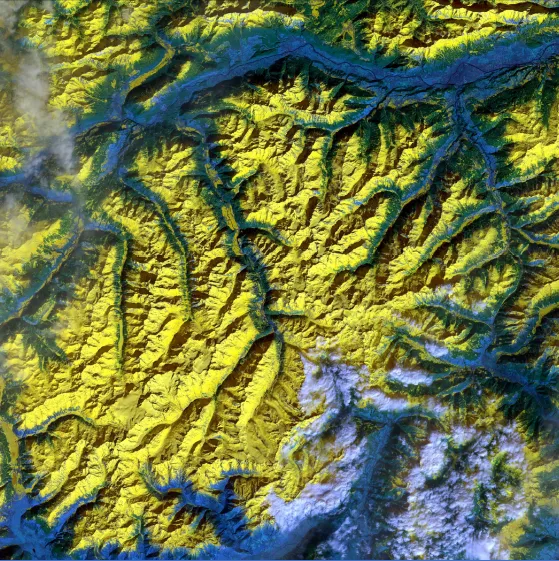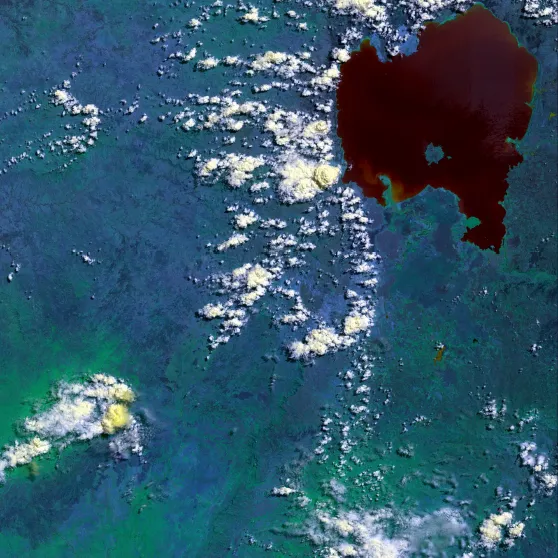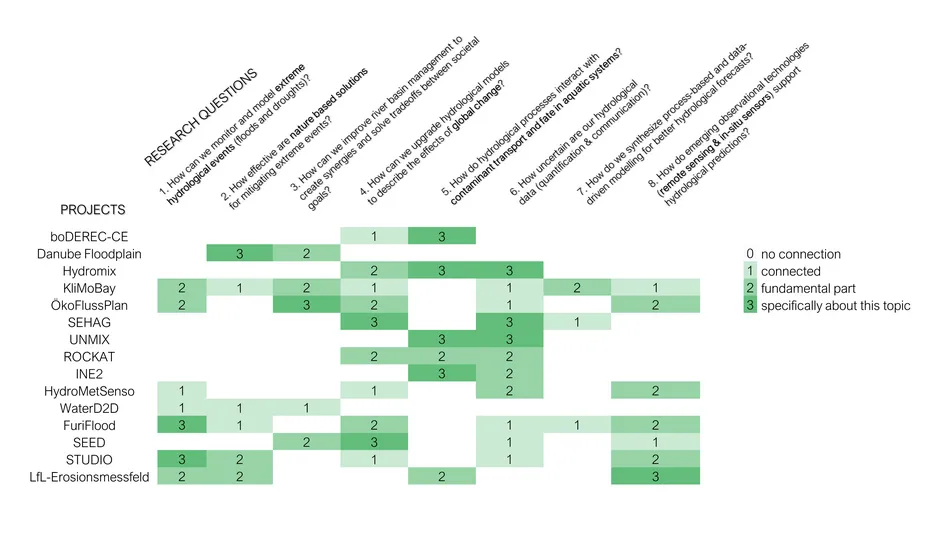The Chair of Hydrology and River Basin Management works on a variety of interesting and crucial research projects. Their aim is to answer key research questions in the field of hydrology. The following matrix highlights the main focus of each project, its scope and connection to relevant themes.
More information is available on the description of each project.
Research activities at the Chair of Hydrology and River Basin Management focus on the following areas:

IWRM is a process that promotes the coordinated development and management of water, land, and related resources to maximize the resulting economic and social welfare in an equitable manner without compromising the sustainability of vital ecosystems. Managers, whether in government or the private sector, must make difficult decisions about water allocation. More and more, they must allocate diminishing supplies to ever-increasing demands. Drivers such as demographic and climate change add to the stress on water resources. Our research supports them with a holistic approach to water management. Research projects in this regard include WE-ACT, UAWOS and RETOUCH Nexus. Successfully completed projects are Danube-Floodplain, Klimobay , OekoFlussPlan, Globaqua, Nima-Nex, Proline-Ce, Sinowater and Sumario.
Main contact: Prof. Dr. Markus Disse

Extreme hydrological events, such as droughts and floods, vary in their nature spatially and temporally. The number of these events has increased in recent decades. To study the consequences of extreme hydrologic events due to the uncertainty of projected climate changes, process-based hydrologic modeling and appropriate data analysis in space and time are essential. For proper planning and decision making, we provide human-centered technical solutions. Research projects in this context are HiOS and SEED. Successfully completed projects are ProNaho, Retention-Potential-at-the-Inn, Adaptrisk, Horix and Warif.
Main contact: Prof. Dr. Markus Disse

We study natural and human-influenced hydrological processes in the Alps, including time series analysis, modeling and experiments. Our research area is mainly the Adige river basin, located in northeastern Italy. Research projects related to alpine hydrology are SEHAG and Hydromix.
Main contact: Prof. Dr. Gabriele Chiogna

The derivation of runoff from areal precipitation is an important task of hydrology. By using high-performance computers, it is possible to calculate rainfall-runoff processes with high resolution (grid size<1m) by means of hydrodynamic-numerical methods. This method has proven to be particularly useful for heavy rainfall runoff (cf. project HiOS). Since not only the runoff, but also the water depths in the area are calculated, processes that could not be simulated directly so far can be captured. This includes re-infiltration. By comparison with standard methods (e.g. Lutz methods), important insights into their parameterization and application limits can be gained.
Main contact: Dr. Karl Broich

We are currently facing various water quality problems, such as high nitrate concentration, oxygen deficit, eutrophication. These problems have further aggravated under the influence of climate change. Understanding water quality problems requires multidisciplinary knowledge, such as watershed hydrology, biogeochemistry, aquatic ecology, limnology. Solving water quality problems requires a combination of multiple methods, including monitoring, modeling, and experimental research.
We are currently using advanced monitoring, data analysis, and modeling approaches in combination with necessary experimental research to investigate river water quality state variables and provide insights into their process cycles. Other goals are to quantify the impacts of frequent extreme weather events on water quality and to provide future water quality predictions and forecasts under climate change.
Our recent studies in this context are:
- Continuous estimation of instream nitrogen uptake using a combination of high-frequency data and water quality modeling
- Quantifying parameter uncertainty in water quality modeling using high-frequency dissolved oxygen data
- The impact of extreme summer low flows on water quality and processes in an agricultural stream
- Modeling the transport and transformation of fluorescent dissolved organic matter in an urban stream
Further online information:
- https://meetingorganizer.copernicus.org/EGU2020/EGU2020-9292.html
- https://meetingorganizer.copernicus.org/EGU21/EGU21-8936.html
- https://www.youtube.com/watch?v=CeiomfIp1a8&t=3s
- https://ui.adsabs.harvard.edu/abs/2018EGUGA..2016623H/abstract
Main Contact: Dr. Jingshui Huang

The importance of the new elements of digitization is gaining widespread awareness. In Europe (EU), digitization is set as the next long-term strategic planning of the EU. The EU Commission has proposed a €7.5 billion Digital Europe program to accelerate recovery and drive digital transformation in Europe (https://ec.europa.eu/digital-single-market/en/europe-investing-digital-digital-europe-programme). In the field of hydrology, digitization accelerates research through the use of data, as data is the basis for both statistical methods and hydrological models. These two approaches are critical in hydrologic research for understanding and simulating hydrologic processes. In the Hydrologic Digitization group, we aim to adapt emerging new methods or algorithms from Artificial Intelligence to the hydrologic domain to facilitate data collection and the development of new modeling approaches. As an expected outcome, the research would provide better solutions to two scientific challenges in hydrology: Data scarcity and modeling, which attract extremely high research interest involving machine learning/deep learning methods. The research will address both droughts and floods, two of the most important thematic research topics in hydrology. Currently related research projects are FuriFlood and Oekoflussplan. Relevant knowledge could be learned in lectures: Remote Sensing in Hydrology, Seminar in Rainfall-Runoff Modeling and Hydrological and Ecological River Basin Modeling.
Main contact: Dr. Ye Tuo
